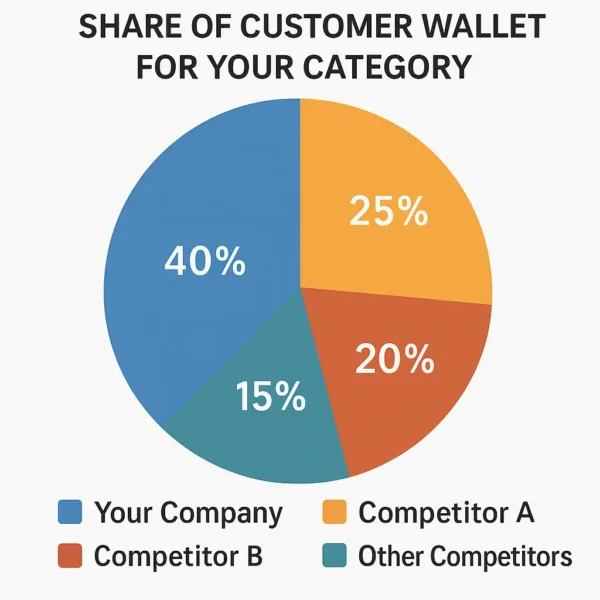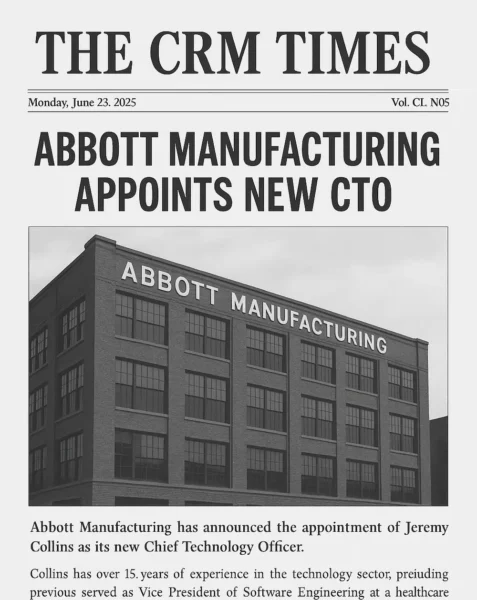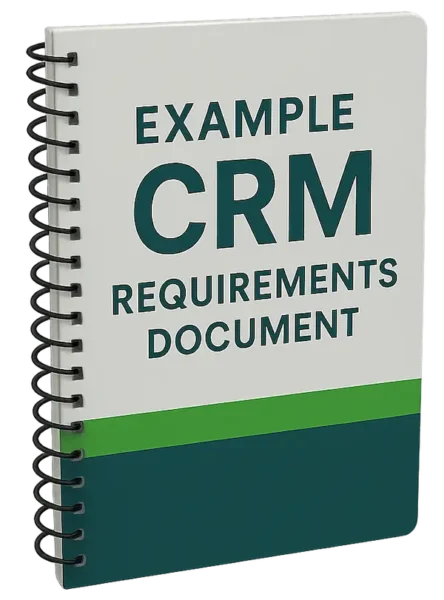Do your top customers collectively spend half their budget with your competitors for the product or service categories you sell?
If your sales team can reclaim even a fraction of that missing share of wallet (a.k.a. wallet share)—the percentage of a customer’s total spending captured by your business—it can unlock significant revenue growth for your company.

Amazon is a prime (pardon the pun) example of a business that persistently increases wallet share. By continually diversifying its product mix, offering an array of Prime Membership benefits, and creating sophisticated algorithms to recommend products based on browsing & purchase history, the company has increased the share of wallet from consumers at an unprecedented level.
B2B companies with an e-commerce storefront can adopt strategies and tactics similar to those employed by Amazon.
For organizations that don’t sell via e-commerce, there are other ways to increase wallet share among existing accounts.
In this post, we’ll explore how a CRM system, when implemented strategically, empowers sales teams to deepen customer relationships, identify untapped opportunities, and systematically increase wallet share.
What Is Share of Wallet and Why Does It Matter?
Share of wallet measures how much a customer spends with your company versus competitors in the same product or service category. Improving wallet share is often more cost-effective for businesses that serve major accounts than finding and acquiring new customers.
Goals include:
- Revenue growth from existing accounts
- Stronger customer loyalty and longer retention times
- Higher average customer lifetime value (CLV)
But how do you shift more spending from competitors to your brand? One way is to leverage CRM tools to facilitate more personalized, relevant interactions based on data.
Four CRM-Driven Strategies to Increase Wallet Share
Uncover Hidden Opportunities with Account Mapping
A CRM system centralizes customer data, enabling sales teams to map out every division, department, decision-maker, and program within an account. By analyzing the following, sales CRM users can identify areas where the company’s offerings are not being utilized effectively.
- Historical spending patterns
- Expenditure allocation across products/services
- Competitor engagement insights
For example, if a manufacturing client invests heavily in one of your lines but sources another line from a competitor that you also provide, a CRM can identify this gap for targeted cross-selling.
Strengthen Loyalty and Uncover Needs with Quarterly Business Reviews (QBRs)
Ongoing QBRs are a cornerstone of customer retention and growth in wallet share. A CRM can automate:
- Scheduling QBR meetings and shared documentation of outcomes (the latter becomes a part of corporate memory)
- Tracking and incorporating key performance metrics such as order and usage trends
- Sharing specific insights, such as how much the customer saved using your products or services
By demonstrating ongoing value, you position your company as a strategic partner, not just a vendor.
Leverage Predictive Analytics to Anticipate Needs
Today’s CRM systems use predictive analytics to forecast customer behavior, such as:
- Highest churn risks
- Emerging needs based on industry trends
- Planning for upcoming budget cycles
For instance, if a retail client’s spending dips seasonally, a CRM can trigger tailored offers or check-ins to maintain engagement. This proactive approach prevents competitors from swooping in during critical moments.
Tracking Customer News

Customer news items, such as the following, can be integrated into a CRM system:
- Mergers and acquisitions
- New hires
- Product launches
News stories can shape the type of outreach made to customers.
This can range from a congratulatory email to offering to assist with a transition to highlighting the customer in your content.
Building a Growth Strategy
Here are several key takeaways:
- Data is power: Use CRM capabilities to turn raw customer information into actionable insights.
- Strengthen relationships: Consistent engagement, such as Quarterly Business Reviews (QBRs), builds trust and loyalty and uncovers opportunities.
- Stay agile: Continuously track account changes and adapt strategies to shifting priorities.
Ready to Capture a Larger Share of Your Customers’ Wallet?
By integrating these strategies with the help of CRM, sales teams can transform major accounts into long-term revenue engines.
It’s best to consider these strategies in advance before investing in a new CRM system.



